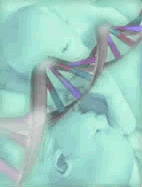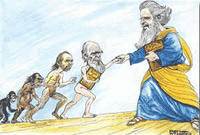
The debate continues to rage in the latest press release from the American Life League:
The problem with the argument these gentlemen are advancing lies primarily in this statement:C. Ward Kischer, PhD, human embryology professor emeritus, and Fr. Joseph Howard, M. Div., of American Life League, have issued the following statement regarding their analysis of an Altered Nuclear Transfer-Oocyte-Assisted Reprogramming (ANT-OAR) process proposed by Dr. William Hurlbut. This process, by which an experimental protocol would generate presumed pluripotent cells, but presumably not human embryos for research, raises many serious moral concerns and should be especially troubling for Catholics in the field of science. Dr. Kischer and Fr. Howard address the moral concerns of the proposal and reiterate the teachings of the Catholic Church when dealing with such delicate matters involving the gift of human life.
C. Ward Kischer, Ph.D., states that, “It appears that within an experimental protocol of ANT-OAR, through cloning, not all in the progeny of blastomeres may become genetically modified and therefore would likely be totipotent. Such a totipotent blastomere would indeed be equivalent to a human zygote who is a human embryo.”
It's unclear how Kischer has arrived at the conclusion that "...not all in the progeny of blastomeres may become genetically modifed and therefore would likely be totipotent." Is he redefining what it means to be totipotent or what it means to be a blastomere? Has he done experiments that confirm his assertion? I kinda doubt it. If anyone knows if such experiments have taken place, do let me know! I'm always ready to stand corrected! The quotes from Donum Vitae don't apply to this procedure if, in fact, no human embryo is involved, and I think this seems to be the case... because what we DO know leads us to believe that it's not even possible for a real blastomere to be generated from ANT-OAR.
In an unpublished paper, Fr. Nicanor Austriaco, OP explains why:
For our analysis, the definitive question that arises is the following: Does the absence of the maternally imprinted gene products that are only produced when genes are inherited from the father impact the system dynamics of the whole parthenote ab initio substantially changing it so that the parthenote becomes a tumor, or does their absence only lead to a defective part of an embryo that becomes a tumor eventually killing the whole?
In response, we return to a key study, already mentioned above, that has shown that the absence of both paternally and maternally imprinted genes impacts the development of the embryo from the very beginning at the two-cell stage.19 Moreover, the absence of the maternally imprinted molecules impacts that parthenote at the level of the whole since the scientific evidence suggests that the imprinted genes regulates the overall number of cells that develop in the blastocyst. In addition, another study has demonstrated that the organization of a parthenote differs from the organization of a normal embryo from the very start: In normal development, when the single-celled mouse zygote divides into two cells, these two cells, called blastomeres, are already not identical. One of the two cells divides ahead of its sister and tends to contribute most of its cellular descendents to the embryo proper, whereas the other, later dividing cell, contributes cells predominantly to the extra-embryonic tissue including the placenta.20 However, in contrast, when a single-celled mouse parthenote divides into two cells, these two cells do not behave in the way that normal blastomeres would behave.21 The first cell that divides does not necessarily contribute its descendents to the embryo proper.This is a small but significant difference in organization that points to the difference between the parthenote and the normal embryo at the very earliest stages of the development. In sum, all of this data suggests that the forces that lead to tumor formation are already present at the earliest stages of embryonic development. In other words, the system dynamics of the parthenote as a whole already differs from the system dynamics of the normal embryo since normal embryos do not become teratomas. Like the complete mole, a parthenote is not an embryo.
Whether or not OAR results in a parthenote has to be confirmed through non-human experimentation. Fr. Austriaco's explanation makes it clear that the material conditions necessary for the existence of a human embryo simply aren't present in the product of OAR. What remains to be done is experimental verification of this conclusion, first with enucleated non-human eggs and then, if successful, on enucleated human eggs.
The entire press release from ALL can be read here...
The text of the Joint Statement from the Catholic ethicists can be found here...
The link to the White Paper from the President's Council on Bioethics can be found here...
